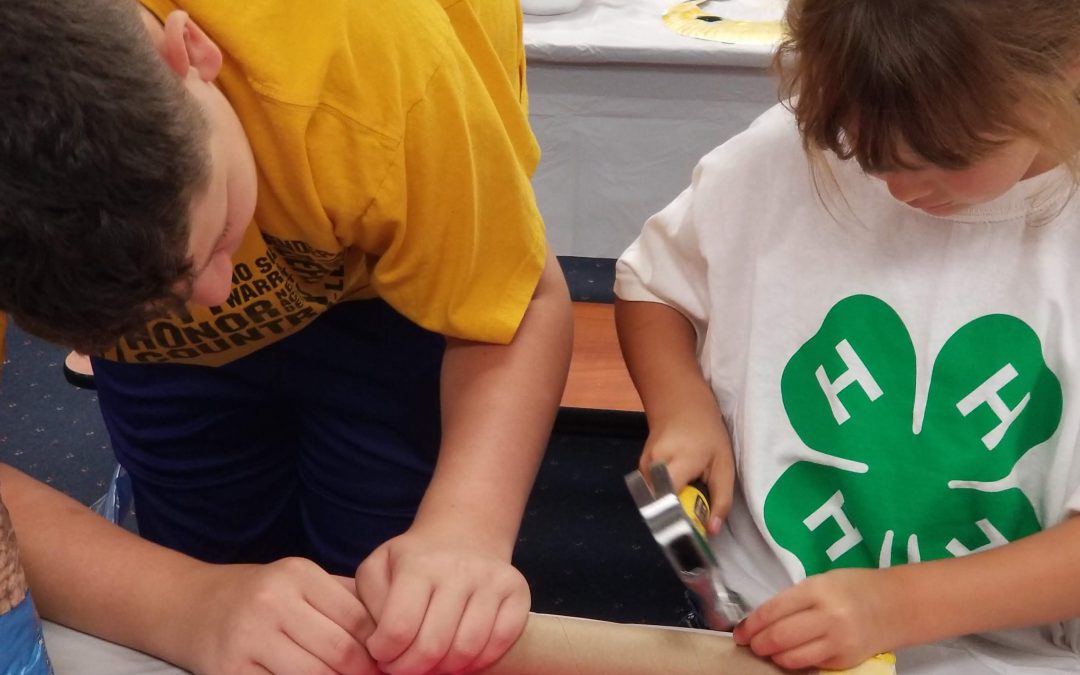
by Niki Crawson | May 19, 2023
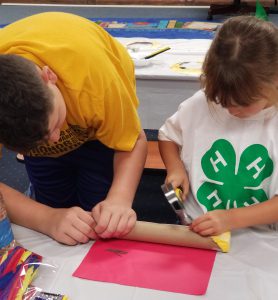
We know that younger youth look up to older youth and like to model their behaviors. We see it in siblings all the time, absorbing behaviors of their older brothers or sisters like sponges. Often times, younger youth find the attention and encouragement of older youth more relatable due to the closeness in age. Peer teaching fosters a more engaging and even symbiotic learning experience as this gives teens the opportunity to share and reinforce their own knowledge. In addition, by pairing the two age groups together in a learning environment, a sense of comradery can develop, creating a greater sense of belonging within the 4-H community. In this post, we will define peer teaching, share a few examples of how to utilize your teens as teachers and provide tips for getting peer teaching started in your clubs and other 4-H events and activities successfully.
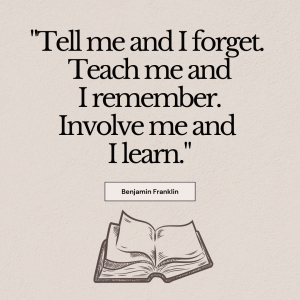
WHAT IS PEER TEACHING?
What do we mean by peer teaching exactly? It is the process of youth learning together and from each other through engaging, hands-on activities. In 4-H, we have the wonderful ability to utilize teens as volunteers and positive role models for our younger youth in our positive youth development programs. Empowering our teens as teachers for our younger members allows life skills to develop among our youth being instructed and also the instructors. The teen instructors are teaching specific topics to their peers at the same time they are strengthening their own leadership, communication, and social skills.
WHAT ARE THE BENEFITS OF PEER TEACHING?
As stated previously, one of the greatest outcomes is that the teacher and the student both gain knowledge and skills. It creates a mutually beneficial environment in which all youth can achieve personal growth and development if implemented and managed correctly. In addition, there are many other benefits of peer teaching such as:
- Peers being taught may form a quicker and better connection with teens due to communication, technology and other trends.
- An increase in peer confidence as they may feel more comfortable in asking questions, discussing topics with others closer to their age.
- Greater creativity as teens may have more innovative or modern ideas to bring to the activities.
- An increase in volunteers as teens have the ability to recruit more teens easier than typical adult volunteers.
- An increase in retention of youth as peers stay in the program and become the next generation of teen volunteers/teachers.
WHAT DOES PEER TEACHING LOOK LIKE IN 4-H?
Below are just a few programs for teens to practice the method of peer teaching in their 4-H county:
- New Members – When new youth join 4-H, it can be overwhelming at times to learn some of the 4-H activities, customs, and such. This would be a great opportunity for
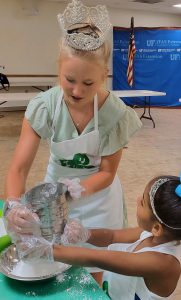 peer teaching. Have teens assigned to new members that join in order to teach them the 4-H pledge, motto, club expectations, member names, etc. This creates a greater sense of belonging and fosters a supportive environment within the club for new members to engage more quickly and successfully.
peer teaching. Have teens assigned to new members that join in order to teach them the 4-H pledge, motto, club expectations, member names, etc. This creates a greater sense of belonging and fosters a supportive environment within the club for new members to engage more quickly and successfully.
- Cloverbud Club Meetings – Utilizing your teen members in club meetings involving Cloverbuds (members ages 5-7) is a great way to incorporate peer teaching in your 4-H program. Younger members thrive off of creativity and enthusiasm which teens often portray easily. Teens can funnel this energy into teaching lessons to Cloverbuds that are engaging and interactive in a simplistic way.
- Summer Day Camps – 4-H programs often times need additional volunteers during the summer to assist with the volume of programming and youth participants. Therefore, summer is a great time to recruit teens to become peer teachers. Having teens as peer teachers helps with supervision and instruction while at the same time, allows them to stay involved in 4-H, continue to apply their life skills learned, and help the program teach life skills to other youth in the community.
TIPS TO GET PEER TEACHING STARTED IN YOUR 4-H COUNTY
What does it take to get peer teaching started in your 4-H county? Time and patience to start with. Teaching with teens is an ongoing task and will take a little effort on your part. Below are a few tips to get you started on having teens peer teach in your county:
- Identify programming that would benefit by peer teaching.
- Recruit quality teen teachers.
- Train and support teens as peer teachers.
- Assign teens appropriate roles in the peer teacher process.
- Model appropriate teaching methods in 4-H programs.
- Shadow teens in the role as peer teachers to provide support and guidance.
- Evaluate, provide feedback, and continue professional development for continued success.
Remember, peer teaching is a great way to utilize teen members in your 4-H programs. Younger youth need as many positive role models as possible in their lives. By having teen teachers take the lead in instruction in your 4-H programs, you are fostering an environment of learning, inclusivity, empowerment, and leadership.
To learn more about 4-H opportunities where teens can take the lead as teachers for their peers, please contact your local UF IFAS County Extension Office, or visit http://florida4h.org.
ADDITIONAL SOURCES:
Burse, G., Crocker, E. T., Jordan, J., McKinney, M., & Murphy, L. (2021). Teens as Teachers 4-H Project: Curriculum and Resources. UF/IFAS Extension, University of Florida. Retrieved May 1, 2023, from https://edis.ifas.ufl.edu/publication/4H432
Eckhoff, A., & Swistock, B. (2011). Staffing with Teenagers and Teens as Cross-Age Teachers. Rutgers Cooperative Extension.
by Niki Crawson | Apr 6, 2023
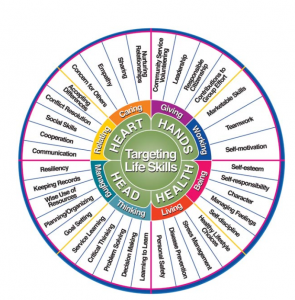
Figure 1. Hendricks, P. (1998) “Developing Youth Curriculum Using the Targeting Life Skills Model”
During the summertime, 4-H typically offers more opportunities for our teen audience since school is not in session as their schedules are more flexible. Because of this, we want to ensure that we are targeting skills that are specific to our teens’ immediate and future wellbeing and success.
In this article, I will discuss why life skills are so important, what 4-H programs already established target, which life skills are most beneficial for our teens and what, when, and how teens can get involved.
WHY DO WE CARE SO MUCH ABOUT LIFE SKILLS?
We know that life skills are abilities learned that help individuals reach their full potential in life. They assist in helping folks successfully handle day-to-day life experiences. We believe they are developed through hands-on learning, activities, and practice.
Life skills are the foundation of 4-H. Utilizing the Targeting Life Skills Wheel (Hendricks, 1998), we connect life skills through 4-H projects, programs, and events to real life experiences based on our Head, Heart, Hands and Health model. By helping youth achieve these life skills, 4-H professionals and volunteers are providing the framework for future academic and employment success, as well as youth thriving and community outreach.
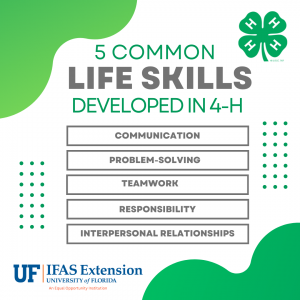
Five essential life skills from the Targeting Life Skills Model commonly developed by participating in 4-H are:
- Communication
- Problem-solving
- Teamwork
- Responsibility
- Interpersonal Relationships
PROJECTS & EVENTS RELATED TO LIFE SKILLS FOR TEENS
Below are just a few 4-H projects and events in Florida 4-H for teens to get involved in to develop and strengthen essential life skills:
- 4-H Tailgating Contest – This program teaches healthy living and the science of grilling seafood, pork, poultry and beef safely outdoors. This program teaches decision making, healthy lifestyle choices, and communication life skills, among others.
- Gator Pit – The Gator Pit is a program open to all teens ages 14-18 in Florida. Youth are taught how to develop entrepreneurial skills through mentorship, competition, and networking to the business community.
- 4-H Legislative – Florida 4-H Legislature provides an opportunity for teens ages 14-18 to experience state government procedures and prepare them for potential leadership in the American democratic process. Youth learn, practice, and defend public policy.
- 4-H University – Florida 4-H University is an opportunity for teens to participate in educational workshops lead by UF faculty, explore potential careers, strengthen interpersonal relationships with peers, and develop critical life skills that will help them become leaders and engaged citizens in their communities.
The Florida 4-H Curriculum Clearinghouse is a list of 4-H resources available, including project curriculum, record books, club resources and other educational publications that meet the standards of Florida 4-H. In this site you can view resources for specific projects. To learn more about 4-H opportunities for teens, please contact your local UF IFAS County Extension Office, or visit http://florida4h.org.
ADDITIONAL SOURCES:
Hendricks, P.A. (1998). Developing Youth Curriculum Using the Targeting Life Skills Model: Incorporating Developmentally Appropriate Learning Opportunities to Assess Impact of Life Skill Development. Iowa State Extension Publication. https://extension.purdue.edu/4-H/about/impact-targeting-life-skills.
Irvine, K. (2019). What are Life Skills? https://blogs.ifas.ufl.edu/nassauco/2019/02/04/what-are-life-skills/
by Marie Arick | Feb 24, 2023
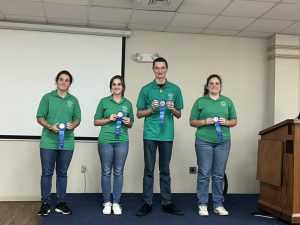
Escambia County’s 1st place Food Challenge Team
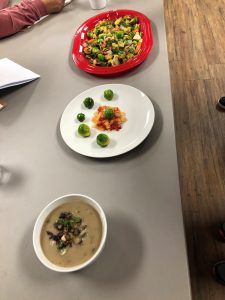
Judging table display of culinary creations. Top, Liberty’s, center Escambia’s intermediate, bottom Escambia’s senior.
The Northwest District 4-H Food Challenge took place on January 7, 2023, and the results were phenomenal! This new competition challenges youth to work as teams of no less than two or more than four, and practice critical thinking, open communication, and presentation skills. Presentations are to include the knowledge and skills youth have learned through the project such as kitchen safety, food safety, cooking techniques, recipe creation, and how they worked together. But that is not all, additionally, teams are using a set of specific cooking supplies, a mystery ingredient, a specific dish category (main dish, side dish, appetizer, or healthy dessert), and a set amount of 4-H money to spend at the challenge grocery store. The entire competition allows 40 minutes for youth to put all of this into practice. Escambia County entered a senior and intermediate team while Liberty County entered an intermediate team into the inaugural competition.
Escambia County’s senior team, dubbed O Crepe and the Spice Girls consisted of Alan Bray-Crews, Laney Clarke, Ryan Clarke, and Aubrie Dillon, who were presented with portabella mushrooms for their mystery ingredient with the category of the main dish. The team produced an excellent mushroom soup as their main dish. The dish along with their well-prepared presentation earned them a place in the Florida 4-H State Food Challenge competition at the Florida State Fair in Tampa on February 18.
The two intermediate teams’ mystery ingredient was Brussel sprouts and the side dish category. The Flaming Clovers of Escambia County consisted of Chloe Bray-Crews, Brian Brewster, Charli McClendon, and Kayla Weaver with alternate member Scott Weaver on hand. The Culinary Criminals represented Liberty County made up of Harper Holt, Jansen Capers, Isabella Ransom, and Lexi Ford. The two teams created uniquely different dishes and presentations. While the Escambia team received the first-place ribbon, Liberty County’s team came in a very close second place. Escambia’s intermediate team also earned a place at the Florida State Food Challenge competition at the Florida State Fair in Tampa!
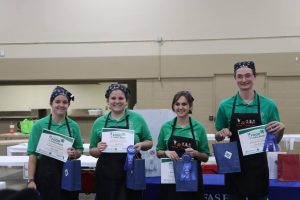
photo credit D. Clarke
O Crepe and the Spice Girls
With both Escambia teams representing the Northwest District at the state competition, it was exhilarating to watch the kids interact and quiz one another while awaiting the competition to begin. Seniors were given a red bell pepper as the mystery ingredient with the category of side dish and intermediates were given a tangerine for their mystery ingredient with the category of healthy dessert. Again, Escambia County dominated and secured first place in both age categories. The first-place senior team at the Florida State Fair, Escambia County’s O Crepe and the Spice Girls, is eligible to compete in the National 4-H Food Challenge at the State Fair of Texas in Dallas this fall.
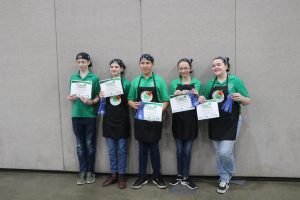
photo credit D. Clarke
Flaming Clovers
This new 4-H opportunity has been embraced in several counties thus far and will continue to grow. This project promotes practical life skills youth will use for the rest of their lives. If your child is interested in food and nutrition and/or healthy lifestyles projects, contact your local 4-H Agent to explore project opportunities.
A special thanks to Escambia County’s volunteer leader, Linda Crews, who has embraced this competition and has worked with these youth to truly make the best better, and to Mr. Dave Clarke for sharing state event photos.
For more information about the 4-H Food Challenge, visit our webpage. The 4-H Food Challenge would be a fun program for your next club meeting. Download the youth guide, team captain guide, and guide for hosting a food challenge.
by Claire Davis | May 6, 2022
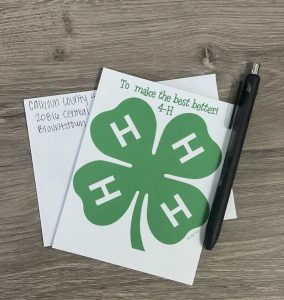 How do you know when it is appropriate to send a thank you card? Have you ever received a gift from someone? Did a volunteer donate their time for an event or for a club meeting? Are you in 4-H and someone purchased your project animal at auction? If you answered yes to any of these questions, then you should have written a thank you note to them! It does not just have to be a life changing event, such as a wedding, birthday, or baby shower, that warrants a thank you card. Whenever someone has done something nice for you, it is definitely worth sending them a thank you card.
How do you know when it is appropriate to send a thank you card? Have you ever received a gift from someone? Did a volunteer donate their time for an event or for a club meeting? Are you in 4-H and someone purchased your project animal at auction? If you answered yes to any of these questions, then you should have written a thank you note to them! It does not just have to be a life changing event, such as a wedding, birthday, or baby shower, that warrants a thank you card. Whenever someone has done something nice for you, it is definitely worth sending them a thank you card.
Writing thank you notes is a skill that many people should have, but many overlook. What exactly do you need to say in your thank you note? Here is an easy guide for a few things that you should include in your thank you note, regardless of the reason you are writing it!
Make sure that you start off by thinking of why you are writing a thank you note! Thank you notes let the individuals know that you care, that you are proud of your accomplishments, or make them feel appreciated for something that they have done for you!
-

A decorated academic cap at commencement. Photo taken 04-29-17.
Make the letter personal by starting with a salutation. Address the individual(s) by their name. If it is someone that you are well acquainted with, it is alright for you to address them by their first name. If it is someone that you are not as familiar with, stick to Mr., Mrs., Ms, and/or Miss last name. Below are a few examples of how to address someone:
Dear Aunt Renae,
Dear Lilly,
Dear Mr. and Mrs. Leonard,
- Get right to the point and express your gratitude. Some examples could be:
“Thank you so much for your generous wedding gift.”
“Thank you for the birthday present.”
“Thank you for donating your time at the Horse Club Meeting.”
“Thank you for purchasing my steer at the Calhoun County Livestock Show.”
- Maybe mention a specific detail or two. There is no need to exaggerate about their gift, but tell them what it might be used for or what you appreciate about it. Here are a few examples of things to say.
“I am so excited to get to use the birthday money on my upcoming trip to Disney World.”
“I’ve had my eye on a smoothie maker, and now I am a smoothie making machine!”
“We are saving the wedding money to help build our future home together.”
“The knowledge you shared at the meeting is incredibly valuable and the kids were soaking it up!”
“I am going to save the money from my 4-H steer project in my college fund.”
- Look ahead to the future. You may be excited about your trip to Disney World or the new smoothie machine, but make sure they know that you appreciate them or enjoyed working with them. If you are likely to spend time with them again in the future, this is a good way to move your letter towards wrapping up.***This suggestion may not apply to every letter.
“I can’t wait to have dinner with you again.”
“I’ll be up that way here in a few months and would love to see you.”
“I am interested in the position and look forward to hearing from you soon.”
“We cannot wait to have you teach us again at the club meeting next month.”
- Wrap it up with another thank you and sign off. Make sure that your letter is clear, you want to thank them for their time, donation, money, etc. You do not have to use fancy language to end your letter.
“Thank you again for thinking of us on our special day!”
“Thank you for being so generous to our organization.”
“Again, thank you for spending your time with us.”

Albert the Alligator Florida Gator mascot holding a thank you sign. Photo taken 11-16-16.
Make sure to end your letter appropriately, whether that be professionally or casually.
“Warmly,”
“With love,”
“Sincerely,”
When in doubt, write a thank you card. Your recipient will feel extra special that you want to show them your gratitude!
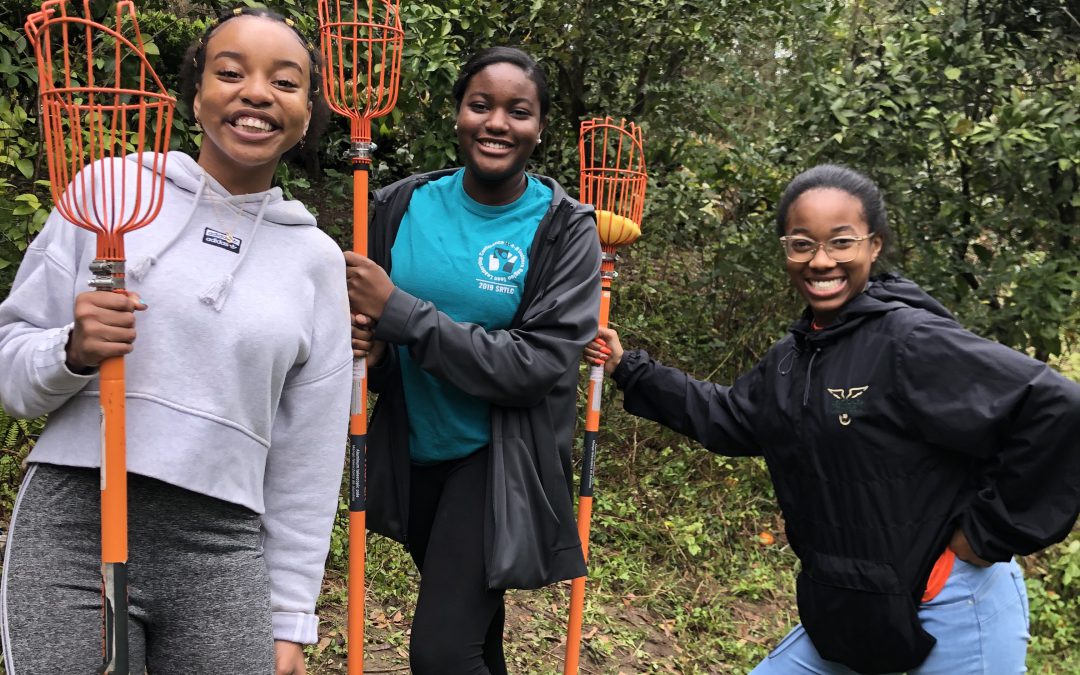
by Allison Leo | Mar 20, 2020

Valentines Day Cards for the Tallahassee Senior Center
From participating in a park clean up to sewing dog beds for the local animal shelter, many 4-H members are actively involved in community service projects as part of their 4-H club experience. 4-H members pledge their hands to larger service, making community service an important part of club membership. 4-H has historically given back to the community by encouraging young people and adults to volunteer. Giving back to the community allows members to learn the value of helping others, develop leadership and communication skills, feel empowered, grow their decision-making skills, and much more.
But, are these members involved in service-learning? What is the difference between a community service project and service-learning? How can you turn a club community service project into service-learning?
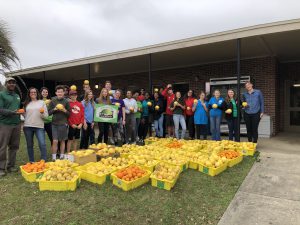
Leon Camp Counselors collected over 1,300 lbs of produce.
COMMUNITY SERVICE
Community service is work done by an individual or group that benefits others. This work is typically done in your own community, to directly benefit the members in your community. Examples of this type of service are conducting food drives, planting a community garden, creating holiday cards for nursing home residents, or helping serve meals at a shelter.
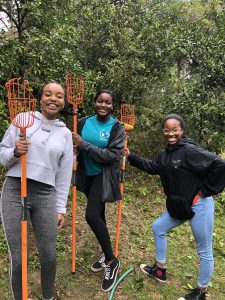
Leon teens took a break from gleaning to pose for a picture.
SERVICE-LEARNING
Compared to community service projects, service-learning is a method of teaching youth that fosters a deeper connection to the project. Service-learning merges a meaningful community service project with purposeful learning and reflection. Here’s an example: if youth serve lunch to veterans, they are providing a service to the community and that is considered a community service project. For that same project to become a service-learning project, additional learning and reflection opportunities are included. Youth would be involved in the planning process and would work together to select the service-learning project based on the needs of a community. Before serving lunch to the veterans, youth could learn about the challenges and issues facing veterans in the community from a guest speaker or they could conduct research independently to present at a club meeting. After the project, youth reflect on the experience of serving lunch to the veterans and share any feedback or results with the community.
Successful Service-Learning Projects Include Four Steps:
Step 1: Assess
Club members work together to identify and assess needs in their community. Youth can have a brainstorming session or take a club field trip to assess needs in-person. After identifying multiple needs, club members will take a vote on the best option for their service-learning project.
Step 2: Plan
This step will take the most time. It is important to schedule the appropriate amount of time to plan the project. This can occur during a club meeting for small projects or over the course of multiple meetings for larger projects. Use the information gathered during step 1 to develop a plan, timeline, list of supplies and roles and responsibilities for each team member. It is a good idea to identify potential problems that might occur. Safety and risk management procedures will need to be addressed during this step. Club volunteers can guide this youth-led process, but it is important to let club members take the lead in planning.
Step 3: Conduct Service Project
Time to complete your service project! The day of service is rewarding and exciting. Make sure you have the supplies needed and roles are assigned appropriately.
Step 4: Reflection
During and after the service project, it is important to pose reflection questions to the group and individuals. This allows youth to think about their project and draw a connection to the bigger picture. Why is the service being completed important? What have you learned from it? Has it taught you a new skill or changed your mindset about something? Most importantly, now that you have learned from the project, what are you going to with your new knowledge? Reflection can be through group discussion, journal writing, photographs, or multimedia presentations.
For more information on service-learning projects or other 4-H programs that build essential life skills in youth, please contact your local UF IFAS County Extension Office, or visit http://florida4h.org.

 peer teaching. Have teens assigned to new members that join in order to teach them the 4-H pledge, motto, club expectations, member names, etc. This creates a greater sense of belonging and fosters a supportive environment within the club for new members to engage more quickly and successfully.
peer teaching. Have teens assigned to new members that join in order to teach them the 4-H pledge, motto, club expectations, member names, etc. This creates a greater sense of belonging and fosters a supportive environment within the club for new members to engage more quickly and successfully.














